Solving the commercial passenger spaceflight puzzle (part 2) – The Space Review
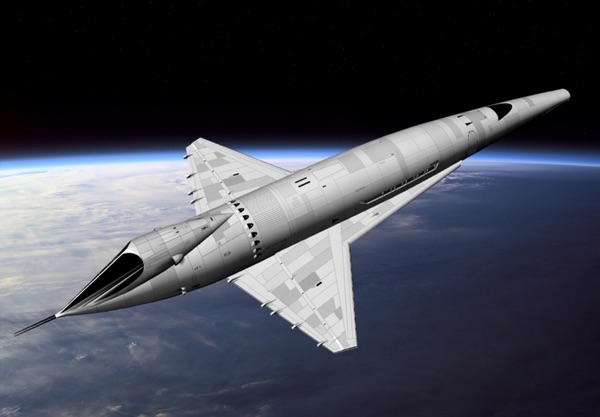
Illustration of the Orion III spaceliner from the movie 2001: A Space Odyssey. (credit: J. M. Snead) |
by Mike Snead, P.E.
Monday, September 9, 2019
In 1968, the movie 2001: A Space Odyssey forecast routine and frequent commercial passenger spaceflight to, from, and within space within three decades. Most in the aerospace community likely saw this as a reasonable forecast given the rapid advancement of human spaceflight capabilities in only a decade. Yet, five decades later, such commercial passenger spaceflight remains a puzzling, elusive goal.
| Many recognize that acceptably safe passenger spaceflight is essential for the human opening of space to permanently take hold. |
Now with the American public and Congress awakening to China’s growing challenge to America’s free world leadership, as happened in the 1960s with the Soviet Union, space has again become an arena of technological competition as an element of national ideological cold warfare. As was recognized many decades ago at the end of World War II, space is the new “high ground.” Military experience clearly shows that national technological and operational domination of the high ground is essential for our freedom and prosperity. President Trump is calling for broad changes to, in part, answer China’s growing technological challenge, but also to support the broad expansion of American private enterprise into space as space industrialization and settlement begin. In the White House’s August 30 statement of fiscal year 2021 research and development budget priorities, “American space exploration and commercialization” will be a priority. We must now organize and effectively utilize our industrial base to boldly accelerate America spaceward, just as we did in the 1950s and 1960s.
Many recognize that acceptably safe passenger spaceflight is essential for the human opening of space to permanently take hold. Recently, the International Space Safety Foundation proposed one approach for undertaking the safety certification of commercial passenger spaceflight systems. In part 1 of this article, I discussed the faults of this proposal, focusing on the proposal’s reliance on NASA’s dysfunctional “human-rated” approach to safety embodied in their Commercial Crew Program. Further, I do not believe the proposed Space Safety Institute is needed given that it would duplicate what the federal government must do.
If commercial passenger spaceflight is to be legal commerce in the United States, I believe the gederal government has a constitutional and moral obligation to regulate the safety of this new industry—precedence established by the federal safety regulation of railroads, foods, drugs, and, especially, airlines, for example. This section examines the application of airworthiness certification to commercial passenger spaceflight in more detail. This sets the stage for, in the next installment, my proposal on how to jumpstart commercial passenger space travel by developing the first airworthiness certified spaceliners.
Lessons from aviation history
A century ago, coming out of World War I, aviation was starting to blossom. Private industry rapidly advanced aeronautical technologies, developed new aircraft types, and expanded commercial aviation to transport passengers. The number of accidents, often with fatalities, started to increase. With an industry aimed at the rich and famous, Congress acted beginning with the Air Commerce Act of 1926 focusing on improving the safety of airline flight operations. This included the issuing of airworthiness certificates. On December 7, 1926, the Aeronautics Branch issued the first airworthiness certificate after a government inspector flew the aircraft, establishing that that particular aircraft was airworthy prior to its delivery to the customer. On March 29, 1927, the first airworthiness “type certificate” was issued. This established the expected airworthiness of a particular aircraft’s design. However, each production aircraft still required an individual airworthiness certificate to independently validate that it was built per the approved type design and that, through independent ground and flight inspection, it was airworthy. On May 15, 1930, airlines engaged in interstate passenger commerce were required to obtain a separate certificate to legally operate. On May 21, 1936, the famed DC-3 airliner was airworthiness certified with the first airline use on June 25, 1936.
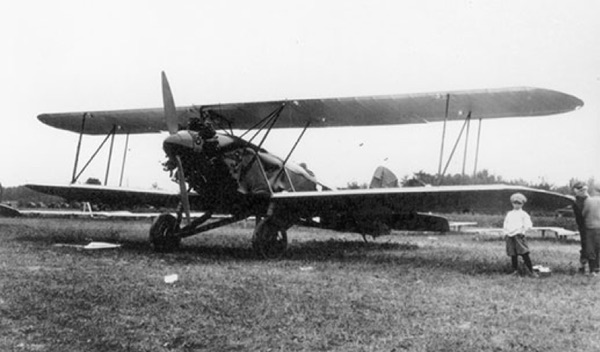
A Buhl Airster CA-3, a three-place open biplane was the first aircraft to receive an airworthiness certificate. (credit: NARA) |
It is noteworthy that from the start of federal airworthiness regulation in 1926, modern commercial airline operations began within a decade using what many believe to be the first profitable airliner, the DC-3. Federal regulation focusing on safety did not hamper the rapid development of air commerce but, in fact, promoted rapid progress by giving investors and the public increasing confidence in the safety and practicality of commercial passenger air travel. This was especially true during the late 1950s when jet travel became the preferred mode of air travel. The argument by some that human space travel inherently requires a different, less ethical approach to safety is without merit.
Addressing the common law “duty to care” obligation
British common law, widely adopted within the United States, defines obligations of those engaged in legal commerce. Those engaged in legal commerce are not free to operate however they wish but are constrained by the liabilities imposed by law.
| Today, for commercial passenger spaceflight, the “duty to care” obligation is not discussed, at least not in public. |
Not being an attorney, my understanding is that common law states that those engaged in commercial passenger transport have a legal “duty to care” to protect the safety of their passengers. It is my understanding that the use of “passenger” in describing the services offered, such as operating a “passenger ship” or commercially offering to transport people to a destination, implies to the public that the duty to care obligation holds. A failure to faithfully meet this duty can subject the owners and operators to civil and, possibly, criminal consequences. Common law liability, in various forms, dates back thousands of years.
From a design and engineering perspective, the duty-to-care obligation means that the best available engineering and operating safety principles and practices are to be used, not just what can be afforded by the available funds or as directed by the owners. For commercial air travel, federal legislation makes the government an independent judge of whether the best available safety principles and practices, defined by government airworthiness regulations, are properly used.
The Federal Aviation Administration (FAA), with more than 1,300 engineers, scientists, inspectors, test pilots, and other safety professionals, defines its aircraft airworthiness certification process in this manner:
The FAA’s aircraft certification processes are well established and have consistently assured safe aircraft designs. As part of any certification project, we conduct the following:
- A review of any proposed designs and the methods that will be used to show that these designs and the overall airplane complies with FAA regulations;
- Ground tests and flight tests to demonstrate that the airplane operates safely;
- An evaluation of the airplane’s required maintenance and operational suitability for introduction of the airplane into service; and
- Collaboration with other civil aviation authorities on their approval of the aircraft for import.
Essentially, my understanding is that airworthiness regulation shifts the common law “duty to care” burden from the aircraft builder/owner to the government to ensure that the best practice airworthiness regulations are faithfully being followed. This approach segregates safety from the commercial pressures of profits, public relations, and employee job security. I believe that only government civil servants can properly carry the ethical burden of making airworthiness oversight function acceptably well.
Today, for commercial passenger spaceflight, the “duty to care” obligation is not discussed, at least not in public. I find this disconcerting as it implies a lack of senior government and corporate attention to implementing the ethical engineering processes necessary to meet this common law safety obligation. Just as the aeronautical industry pushed for Congressional engagement to improve commercial air safety in the 1920s, it’s time for the human spacefaring industry—if it truly embraces protecting the public’s safety—to push for Congress to make comparable changes in federal legislation to protect and advance commercial passenger spaceflight safety. Every day that the duty-to-care safety obligation is not faithfully met is a day wasted in terms of advancing America’s ascent to becoming a true human spacefaring nation.
Change “spaceflight participants” to “passengers” in the law
In 2004, Congress was told that ensuring safety needed to be ignored if rapid commercial advancements in human spaceflight were to be achieved. Congress implemented this “strategy” by legally defining a human engaged in spaceflight commerce as not a “passenger” but instead as a “spaceflight participant” where the common law duty-to-care obligation is generally not applicable. Thus, while traveling to the launch site by commercial air, the spaceflight participant would be protected by airworthiness regulation. However, while traveling to space, the spaceflight participant is left to figure out for themselves if they are safe. Further, they are mandated by law to waive any liability that the federal government would normally have to ensure their safety. This is immoral foolishness!
Congress needs to reverse its flawed 2004 approach to human spaceflight participant safety and extend the mandate for airworthiness to commercial passenger spaceflight. Whether a commercial passenger takes an airliner to distant lands, uses a suborbital spaceplane, or travels to, from, and within space, they should be afforded the same ethical protection of their safety by the federal government through mandated airworthiness certification. The human spaceflight industry should welcome this change.
NASA is not the leader to make this needed change
Even though NASA labeled their new astronaut transport capability the “Commercial Crew Program,” substantial federal investment was required to develop these systems. Unfortunately, from the perspective of creating a technological path to future commercial passenger transport, this approach has failed, as discussed in Part 1. For the two capsule systems under development, NASA is struggling to achieve an analytical probability of loss of crew no worse than 1 in 270.
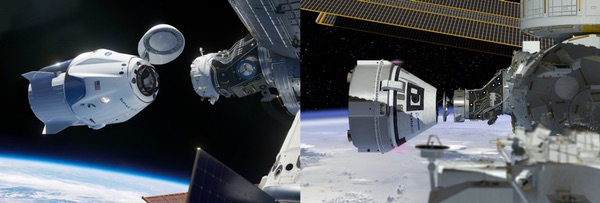
Illustrations of commercial crew capsules to transport NASA astronauts to/from the International Space Station. (credit: NASA) |
The fundamental failure was NASA’s decision to regress technologically back to expendable systems rather than advance to fully reusable systems. Going this route was a top-level government policy decision that, I expect, NASA had a substantial role influencing. It was another of a series of poor decisions by or for NASA that has brought us to this point of struggling to be able to fly Americans to space safely and routinely.
Fifty years ago, as the Apollo program was reaching its goal, interest in the post-Apollo human space enterprise emerged. Around 1970, a senior government panel, led by the then vice president, evaluated the options and recommended developing a fully-reusable, two-stage-to-orbit, vertically-launched, horizontal-landing system: a TSTO VTHL system. The stated goal was routine and frequent human and payload transport to and from low Earth orbit with airline-like operations. This would have been the first part of an expanding national astrologistics infrastructure—a vital spacefaring capability discussed since the early 1950s.
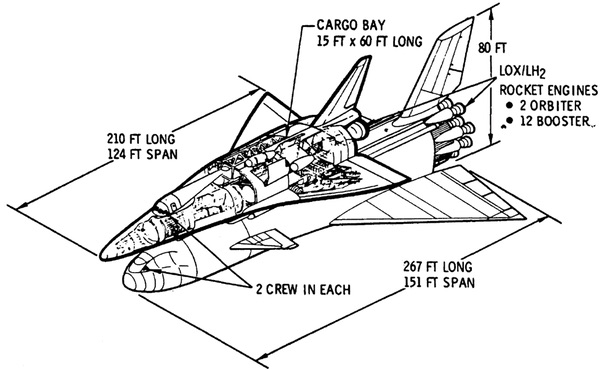
Rockwell 1971 TSTO HTHL concept. (credit: US Air Force.) |
Subsequent budget-driven decisions transformed this fully-reusable system into the substantially-expendable/refurbishable Space Shuttle system, with all of its inherent safety and operational limitations. Acknowledging that, in the early 1970s, developing a fully-reusable TSTO system would have been challenging, it could have received a measure of airworthiness certification, something the revised design as the partially-reusable shuttle could not achieve.
Airworthiness requires full reusability so that prototype systems can be thoroughly flight tested to ascertain the overall airworthiness of the type design and, subsequently, each production flight system can be in-flight inspected to establish that it is airworthy prior to being placed into service. Each mission of the Space Shuttle was a substantially new system with potentially embedded manufacturing flaws and assembly/refurbishment mistakes or damage. Hence, its airworthiness was unknown when it was placed into service.
Whether the loss of the inherent operational safety of a fully reusable original design was a consideration in the decision to go with the partially expendable Space Shuttle system is unknown. Summaries of the decision process indicate it was driven by politics and development budget considerations. However, most believed the assertion that human spaceflight was unavoidably a high risk. (Apollo 13 had happened in 1970 just three years after the Apollo 1 on-pad fire that killed the crew.) Thus, a reduction in operational safety was likely not a significant consideration.
| To those from the aircraft side of the Air Force engaged in the TSTO planning, we were dumfounded by NASA’s decision to skip to operational systems. |
Fast forward three decades to 2002. The need to replace the shuttle with a better, safer system was apparent to government officials. The Air Force and NASA were tasked to jointly propose a program to prototype such a capability. After the failures of the NASP/X-30 and X-33 single-stage approaches, a TSTO VTHL system, similar to that envisioned in 1970, was selected. For many months, NASA and Air Force designers and engineers met at the NASA Marshall Space Flight Center to develop a technical baseline and broad development proposal. Many of the Air Force engineering contingent were, including myself, from Wright-Patterson Air Force Base (WPAFB) where Air Force crewed aircraft development is managed and aerospace plane research had been underway since the late 1950s.
As the TSTO design space narrowed to a mutually acceptable prototype solution, NASA made a key management decision to go it alone. Rather than jointly developing a prototype that would then lead to likely separate NASA and Air Force operational systems, NASA decided to skip the joint prototype and immediately develop its own small fleet of operational systems. At that point, this opportunity to transform human spaceflight collapsed. The Air Force would likely not invest in an operational system without first undertaking a prototype program or do a separate prototype at the same time NASA developed an operational system.
In early 2003, the shuttle Columbia, with its crew, was lost during reentry due to damage to its wing’s thermal protection system by an uncorrected known hazard. As with the political circumstances after the loss of the Challenger in 1986, NASA and its political supporters went into NASA/shuttle preservation mode. After the loss of the Challenger, the International Space Station (ISS) emerged as the justification to continue the shuttle program. After the loss of the Columbia, finishing the construction of the ISS justified restarting shuttle operations. However, in 2004, with the end of the shuttle program in sight, then President George W. Bush announced an ambitious lunar and Mars human exploration program. Rather than seeking a reusable system to replace the shuttle, NASA turned back to expendable rockets and capsules with “human-rated” safety. This effort eventually became the Orion spacecraft for deep space missions and the separate Commercial Crew Program.
To those from the aircraft side of the Air Force engaged in the TSTO planning, we were dumfounded by NASA’s decision to skip to operational systems. I believe the decision was a pure space politics power play by NASA to keep American human spaceflight to themselves. This decision was likely supported by the space side of the Air Force that did not see—and still does not see—any need for crewed military space missions.
Had this TSTO system prototype been undertaken, Air Force airworthiness requirements would have been implemented using the systems engineering expertise at WPAFB. All military aircraft are airworthiness certified before they are placed into operational use. All experimental/prototype military aircraft receive a limited airworthiness certification before Air Force test pilots/personnel fly in the aircraft. Generally, this airworthiness certification is not issued through the FAA but by the responsible Air Force system development commander following an independent airworthiness assessment. The prototype TSTO would have achieved the equivalent of a preliminary airworthiness certification, followed by the equivalent of a type certification and individual airworthiness certificates for the operational military systems. Once the initial small Air Force fleet was built, private industry could have built and operated commercial versions, whose airworthiness would have been certified by the FAA, to undertake commercial passenger transport. This is the opportunity that vanished with NASA’s intransigence and the tragic loss of the Columbia, also due to NASA’s intransigence. These poor decisions have cost America a generation of lost time and clear leadership in human space operations.
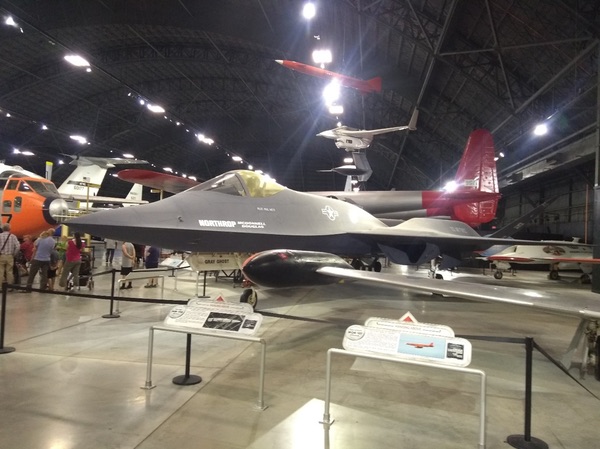
Northrop-McDonnell Douglas YF-23 prototype Advanced Tactical Fighter in the National Museum of the United States Air Force. Two YF-22s and two YF-23s were built and test flown many times. The author was on the independent first-flight review team that reviewed the design and fabrication of these aircraft to provide an independent airworthiness release before Air Force test pilots flew these prototype aircraft. The YF-22 won the competition. Prior to acceptance by the Air Force, each production F-22 received the military equivalent of an airworthiness certificate after being inspected, to demonstrate compliance with the approved design and proper fabrication and assembly, and test flown to show its airworthiness. Airworthiness is maintained through prescribed inspections and modifications. (credit: J. M. Snead) |
We now need to embrace airworthiness to achieve commercial passenger spaceflight
To meet the “duty to care” obligation, airworthiness certification of all commercial passenger spaceflight systems is ethically mandatory—something all engineers working on such systems should acknowledge. Thus, in pursuing its Commercial Crew Program, NASA is now on a separate path from where the rest of America’s commercial human space enterprise needs to go. The rest of the nation’s spacefaring enterprise now needs the capability to develop, manufacture, and operate fully-reusable, airworthiness certified human spaceflight systems.
Focusing on the immediate need for commercial Earth-to-orbit-and-return passenger service—illustrated by the Orion III spaceliner from 2001—technology maturity indicates that a TSTO solution will be needed. While future technology advancements may enable a single-stage solution, the current national requirement is to develop an operational commercial service. We must be careful not to fall, once again, into the trap of putting all of our efforts into achieving a single-stage capability as was attempted with the failed National Aerospace Plane/X-30 and NASA’s X-33 programs. Some, especially in the research community, will strongly urge that this be done. Such recommendations must be rejected!
| To meet the “duty to care” obligation, airworthiness certification of all commercial passenger spaceflight systems is ethically mandatory—something all engineers working on such systems should acknowledge. |
There will be two primary initial markets for commercial TSTO systems. One will be commercial passenger transport to and from space. Initially, this would provide NASA with the ability to transport its astronauts to the ISS—to do what the Commercial Crew Program is intended to do but with an airworthiness certified system. This would provide NASA with the ability to much more frequently rotate personnel through the ISS to perform experiments and, when needed, undertake specialized repairs and upgrades. As this commercial capability serving NASA comes online, it may be expected that other commercial Earth orbit destinations will emerge, perhaps using various private space station capabilities under development. While the operators of the Commercial Crew Program cannot legally sell “passenger” services, the operators of the commercial spaceliners would. The spaceliner developers and operators would have this emerging market all to themselves.
The second primary market will be an operational military capability to transport military personnel and materiel to Earth orbit to support US Space Force, US Space Command, and US Space Guard operations. It is quite possible that this will not, at least initially, be a unique military system. Rather, as is done with commercial airliners, some of the commercial spaceliners would be under contract to operate with “military” crews to fly military spacelift missions. Some commercial flight crews would be reserve Space Force officers temporarily placed on active duty to perform these missions with mission control handled through the US Space Command. Should a future president wish to travel to space, one of these flight systems would temporarily become Space Force One.
In Part 3: In Part 1, I explained why the International Space Safety Foundation’s proposed approach to certifying human spaceflight safety, based on NASA’s “human rated” safety system, is substantially inadequate to meet ethical commercial passenger spaceflight needs. Here, I explained why airworthiness regulation should be extended to commercial human spaceflight by revising federal law. In Part 3, I propose my approach to jumpstart the commercial passenger spaceflight industry under an airworthiness regime.






